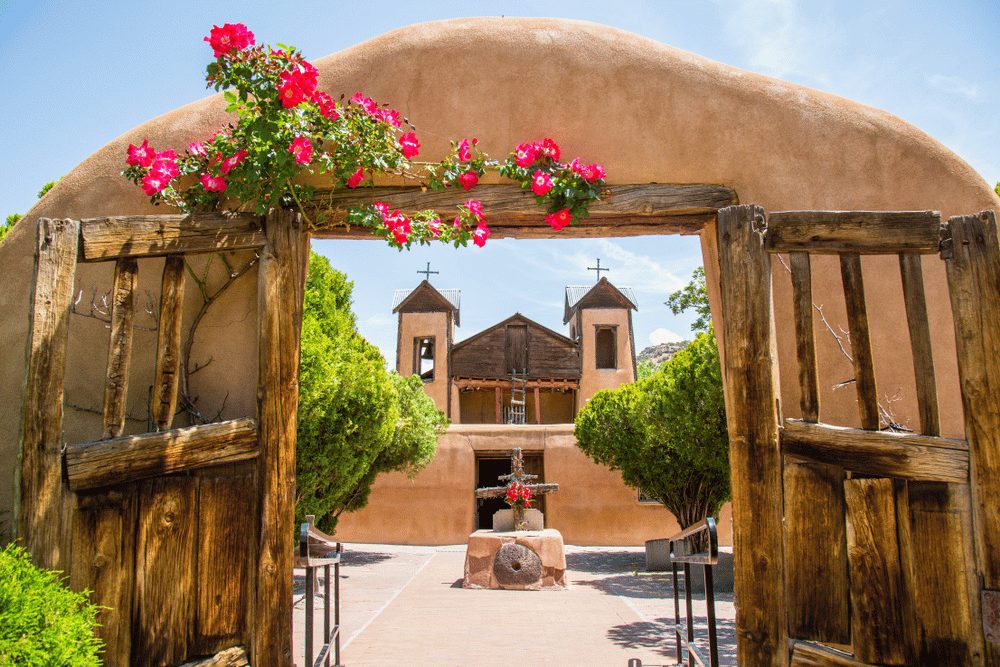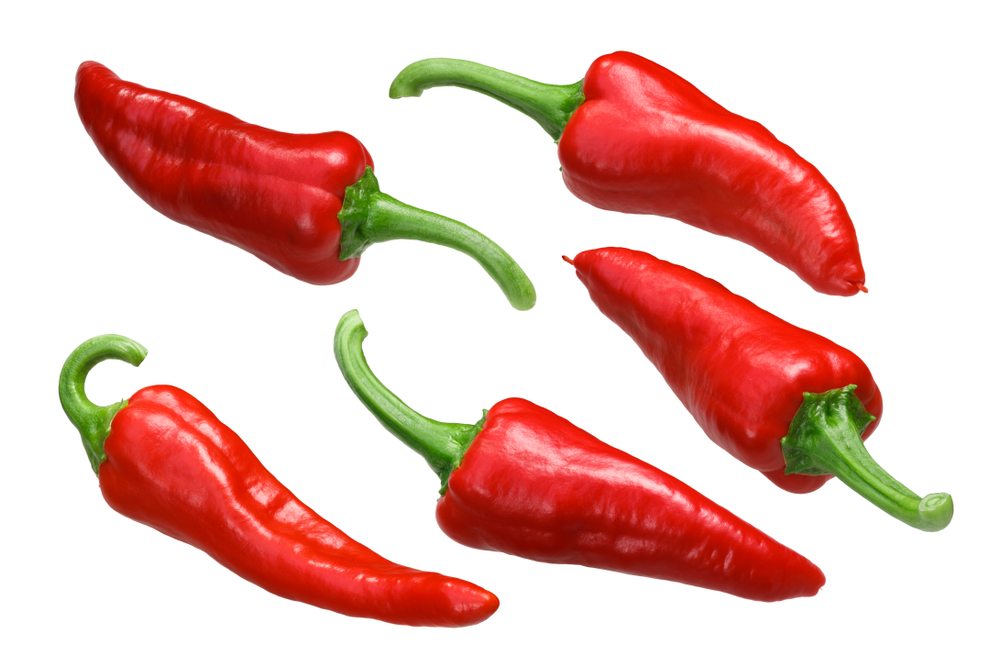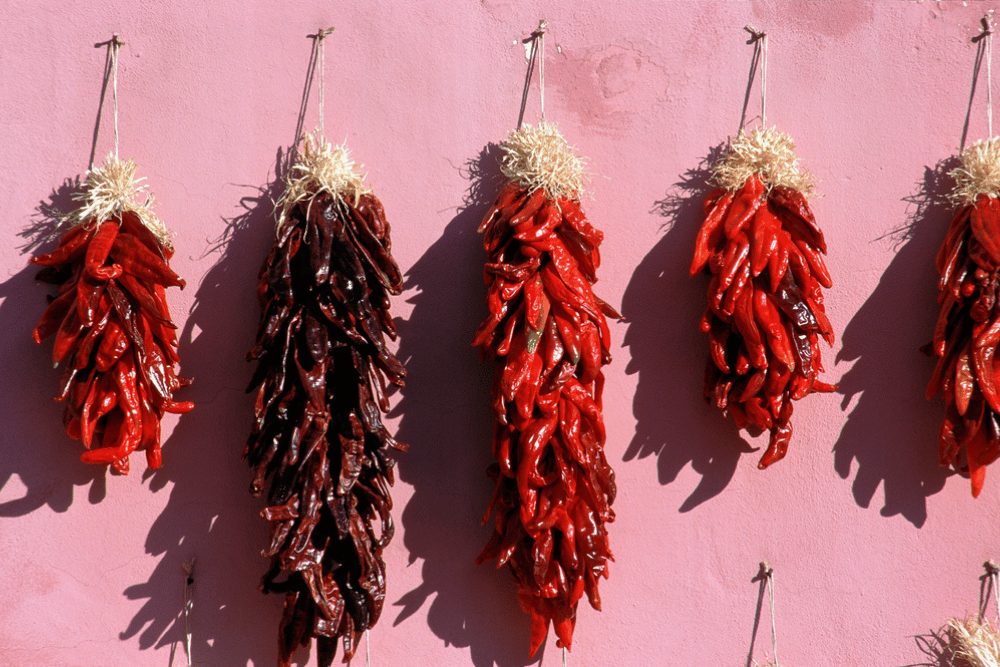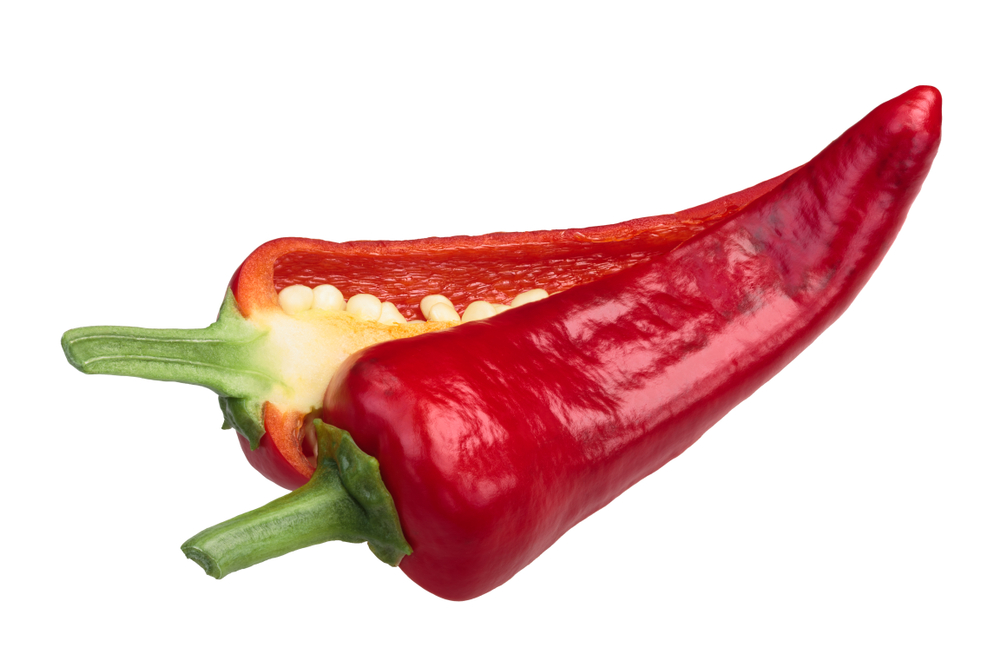Noted for their unique flavor due to specific growing conditions and location, Chimayo peppers are an extremely rare heirloom variety grown in the town of Chimayo, New Mexico. They are only produced for subsistence on about 200 hectares (about 500 acres), hence their rarity.
What Are Chimayo Peppers?
Chimayo peppers are family and community heirloom peppers cultivated across generations in the foothills of the Sangre de Cristo mountains in Chimayo, Northern New Mexico.
As you can already tell, the open-pollinated New Mexico chile is named for the legendary small town of Chimayo—a mountainous region in New Mexico, about 26 miles north of Santa Fe.
Besides being famous for Chimayo chiles, Chimayo is also renowned as a tourist and pilgrim destination for its sacred dirt at the El Santuario de chimayó.

Origins
The Chimayo chili pepper is believed to be a descendant of hot peppers brought to Mexico in the 16th century by Spanish conquistadors.
The pepper has been grown for ages in isolated areas, which is why it’s referred to as a native chile or landrace pepper.
Extinction Status
Like many other heirloom pepper varieties, the Chimayo pepper is listed with the Ark of Taste by Slow Food as a threatened variety facing extinction.
However, this listing and other efforts have drawn attention to the pepper to boost its production. In the early 2000s, the Native Hispanic Institute began the Chimayo Chile Project to increase the local seed stock for the pepper.
The pepper gained even more notoriety over the pandemic when it became part of The Space Chile Grow a Pepper Plant Challenge. As part of the challenge, participants (everyday people like me and you!) were sent Chimayo Chile seeds and “instructions for using methods similar to those NASA would use to grow peppers in a spacecraft, on the Moon, or Mars.” The idea was to have people grow Chimayo peppers indoors under highly controlled conditions that could be replicated in space.
Color
Chimayo peppers start green and ripen to deep red when fully mature. They are harvested and eaten either green or red.
When left to ripen and dry on the vine, the peppers develop their characteristic wrinkly, sun-dried appearance. Since the region gets at least 250 days of sunlight annually—with about 152 of those days with full scorching sun—no dehydrator is needed!
Size And Shape
Mature Chimayo peppers are 4-6 inches long. Chimayos are unpredictable peppers due to their irregular sizes—even the same plant often produces peppers longer than six inches.
The irregularity of Chimayo peppers is also seen in their shape. The peppers may be straight, curled, or bent. The common denominator for their shape is that they have a tapering profile that ends in a blunt tip, much like other conical peppers.
Texture
Chimayos are sometimes interestingly knotted or twisted, while sometimes they’re smooth like other hot peppers in the Capsicum annuum species. The peppers may have several long indentations that cave inward into the pepper cavity.

What Is The Flavor Of Chimayo Chiles?
Chimayo peppers have a sweet, smoky, earthy flavor courtesy of the climate and region they grow in.
The Chimayo valley is an arid area that receives very little yearly rainfall. It’s also defined by rugged terrain and short growing seasons with lots of sunlight, which influence the exceptional taste of Chimayo peppers.
How Hot Are Chimayo Peppers?
A mild heat of 4,000-6,000 Scoville Heat Units may not be much to write home about for a hot pepper, but the Chimayo pepper wears its mild-heat crown with pride alongside its unique flavor profile not found in any other pepper.
Comparing the famous 2,500-8,000 units of jalapeno to the Chimayo, the latter is milder at its peak heat level but hotter at its floor.
Chimayo peppers are hotter at their floor heat than Hatch or Anaheim peppers (500-2,500 SHUs), which are close relatives of the peppers.
When Chimayo peppers came to California, they became known as Anaheim or Hatch peppers. They have the same unpredictability in size and shape and can be harvested green or red. You may find Hatch peppers, which grow in the Hatch town of New Mexico, and Anaheim peppers, differentiated as two distinct varieties.
What Is The Best Way To Use Chimayo Pepper?
Even though they are not grown commercially, Chimayo chile peppers are versatile, as you can use them as decorative gifts or in the kitchen.
When used for decoration, red Chimayos are hung up in ristras as long as the person making them is tall, believing that those are enough Chimayo peppers to grind into chili powder for the coming year.
New Mexicans use Chimayo peppers as a gift when visiting their friends or family members, which is seen as a reverence because of their rarity and unique flavor.

Chimayo peppers are great for culinary applications as well, such as:
- Making stuffed peppers when fresh.
- Adding heat to salsas and stir-fries when raw.
- Seasoning stews, soups, and hot sauces.
- Red Chimayos are dried and ground into Chimayo chile powder or pepper flakes for their earthy flavor. Chimayo powder is called ‘molido,’ while the pepper flakes are called ‘caribe’ in New Mexican cuisine.
- Flavoring pots of beans and New Mexican pozole (hominy stew).
- Marinating pork shoulder overnight.
- Making a slurry with roasted chunks of Chimayo. The slurry is used as a wet marinade.
- Making roux-based red chile sauce, a New Mexican staple.
Where To Buy Chimayo Chiles
You’ll have to live in New Mexico to find authentic Chimayo peppers. Since the pepper is not produced commercially, its fresh form is exceedingly rare outside the town of Chimayo.
You can find the pepper if you visit Chimayo in October and November, but you’ll still need loads of luck as the hot pepper is produced only on about 500 acres, and the locals take up the bulk of the harvest.
Chimayo red chile powder (molido) and Chimayo pepper seeds are available online from Amazon and other retailers.
How Do You Grow Chimayo Chiles?
You can grow your own Chimayo peppers anywhere in the world, but they won’t be genuine Chimayos.
Chimayo chili peppers have a ‘divine’ connection with the land and climate they grow in, which informs their unique flavor. If you grow the peppers elsewhere rather than in their native land, they won’t be as smoky or earthy. The same holds true for other types of peppers, like Espelette peppers and Calabrian chilis, whose taste can only be achieved in specific geographic regions.
However, you can still grow your own Chimayo chiles if you have a hot, dry summer growing season.
Once you obtain the seeds, pre-culture them indoors in early spring, about eight weeks before warm night temperatures set in.
Germination will occur in 7-21 days, and you can transplant the young pepper seedlings outdoors in the garden or pots when they develop six true leaves.
The open-pollinated plants will produce fruits ready for harvesting at full maturity in about 75 days, but you can harvest green chiles earlier for stuffing and flavoring salsas and salads.
Substitutes For Chimayo Peppers
The unique flavor of Chimayo peppers is hard to replicate with other peppers that don’t grow in Chimayo town. Your best bet will be to find peppers with close flavor profiles or similar heat ranges.
Hatch or Anaheim chili peppers make an excellent substitute with their mild spiciness of 500-2,500 SHUs and sweet, smoky, tangy flavor.
You can also replace Chimayo peppers with jalafuegos, hybrid jalapeno peppers with a Scoville score of 4,000-6,000 heat units.

